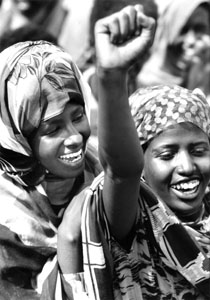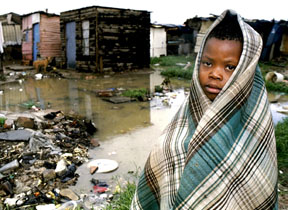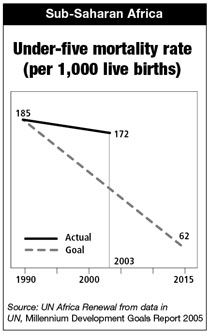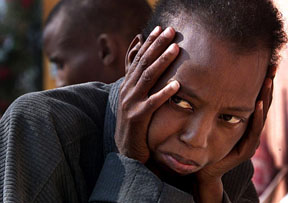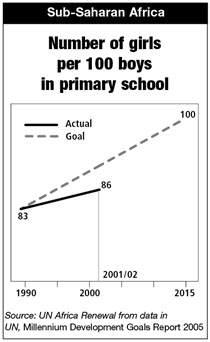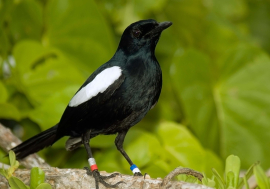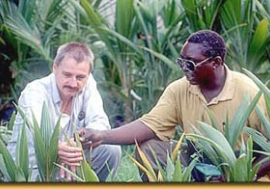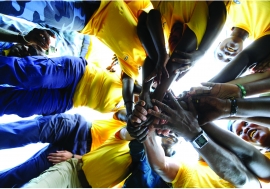Africa and the challenge of the Millennium Development Goals
Africa and the challenge of the Millennium Development Goals
World leaders gathered at the Millennium Summit in New York in September 2000 adopted an ambitious set of goals aimed at achieving measurable progress towards reducing poverty and improving human well-being across the globe. They recognized the particular needs of Africa, the world’s poorest region, which lags behind on virtually every major indicator of development. They will return to New York in September 2005 to review what has been achieved so far.
There is growing international concern that while Africa has made some modest progress in a few areas, it will not be able to even approach the Millennium Development Goals (MDGs) by the target year of 2015 — unless both African countries and the international community mobilize far more efforts and resources. Here we provide a snapshot of the trends in sub-Saharan Africa on a number of the key targets, from 1990 to the present, and indicate the course the region should be on to meet the goals.
|
1. Cut in half, between 1990 and 2015, the proportion of people whose income is less than $1 a day. While the proportion of very poor people in all developing countries fell from 27.9 per cent in 1990 to 21.3 per cent in 2001, the percentage in sub-Saharan Africa has risen. This has also meant that the number of poor Africans climbed from 227 million to 313 million during the same period. |
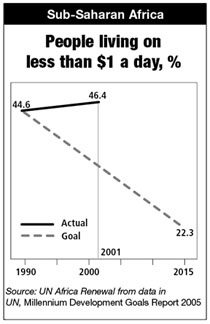 |
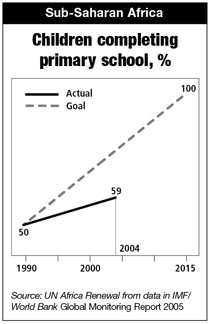 |
2. Ensure that, by 2015, children everywhere, boys and girls alike, will be able to complete a full course of primary schooling. |
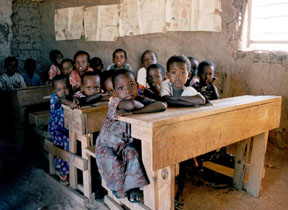
Photo: © TopFoto.co.uk / UNEP
|
|
|
3. Promote gender equality and empower women. In sub-Saharan Africa, the percentage of girls in primary education, in relation to boys, increased from 83% to 86% between 1990/91 and 2001/02; the goal is to reach 100% in primary schools, preferably by 2005, and in secondary and higher education by 2015. The share of women in non-agricultural labour rose from 32% to 36% between 1990 and 2003, while the proportion of women members of national legislatures doubled from 7% in 1990 to 14% in 2005. |
|
4. Reduce by two thirds, between 1990 and 2015, the mortality rate for children under five years old. Photo: © TopFoto.co.uk / UNEP / Shadley Lombard
|
|
|
|
5 Reduce by three quarters the maternal mortality rate. Because of poor data, the mortality rate in 1990 in most regions is not accurately known. However, in 2000, the rate in sub-Saharan Africa (expressed as the number of women dying during childbirth out of every 100,000 live births) was 920, more than twice the 450 average for all developing countries. |
|
6. Combat HIV/AIDS, malaria and other diseases. Although the HIV prevalence rate has stabilized in recent years, it remains the highest in the world. Seven out of every 100 adults are living with HIV. AIDS is the leading cause of premature death in sub-Saharan Africa. Malaria is also a widespread problem, with 90% of the 1 million malaria deaths each year occurring in sub-Saharan Africa. |
|
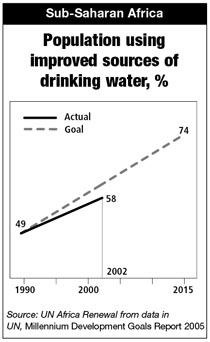 |
7. Ensure environmental sustainability. Reverse the loss of environmental resources. Cut in half the proportion of people without sustainable access to safe drinking water and basic sanitation. |
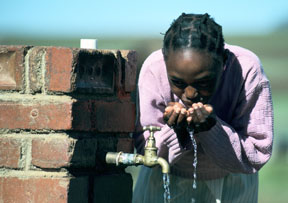
Photo: © Panos / Hamish Wilson
|
|
8. Develop a global partnership for development. This would include establishing an open, rule-based and non-discriminatory trading and financial system, addressing the special needs of least developed countries, dealing comprehensively with developing countries’ debt problems and making the benefits of new technologies more accessible. |
|


